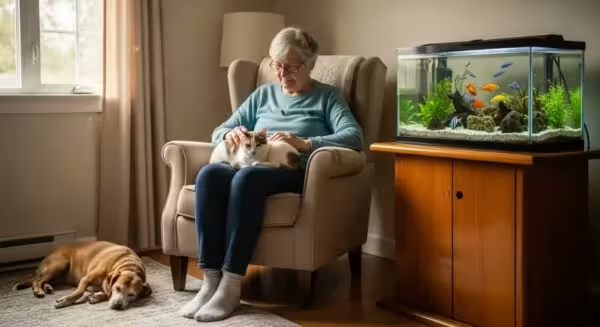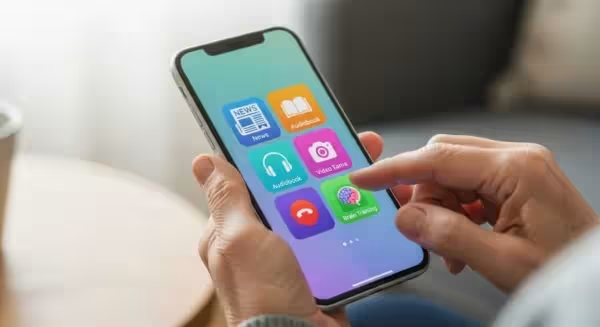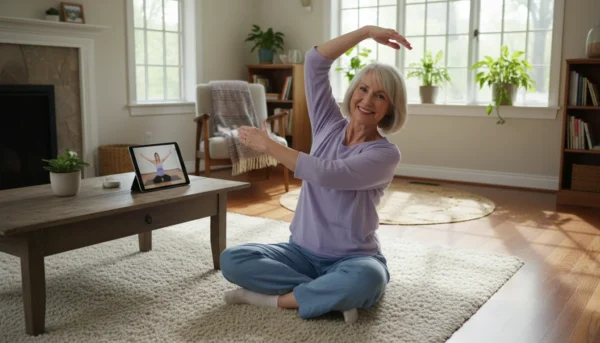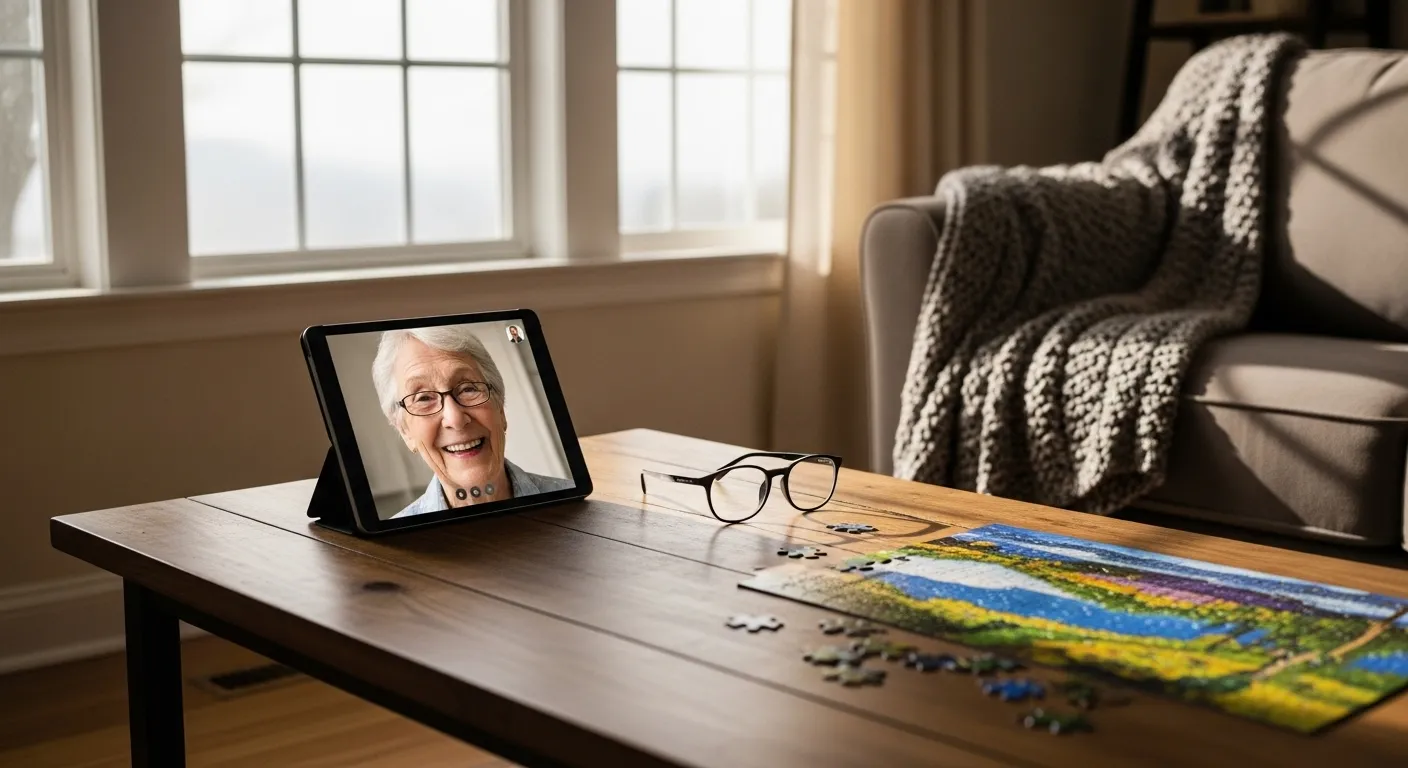
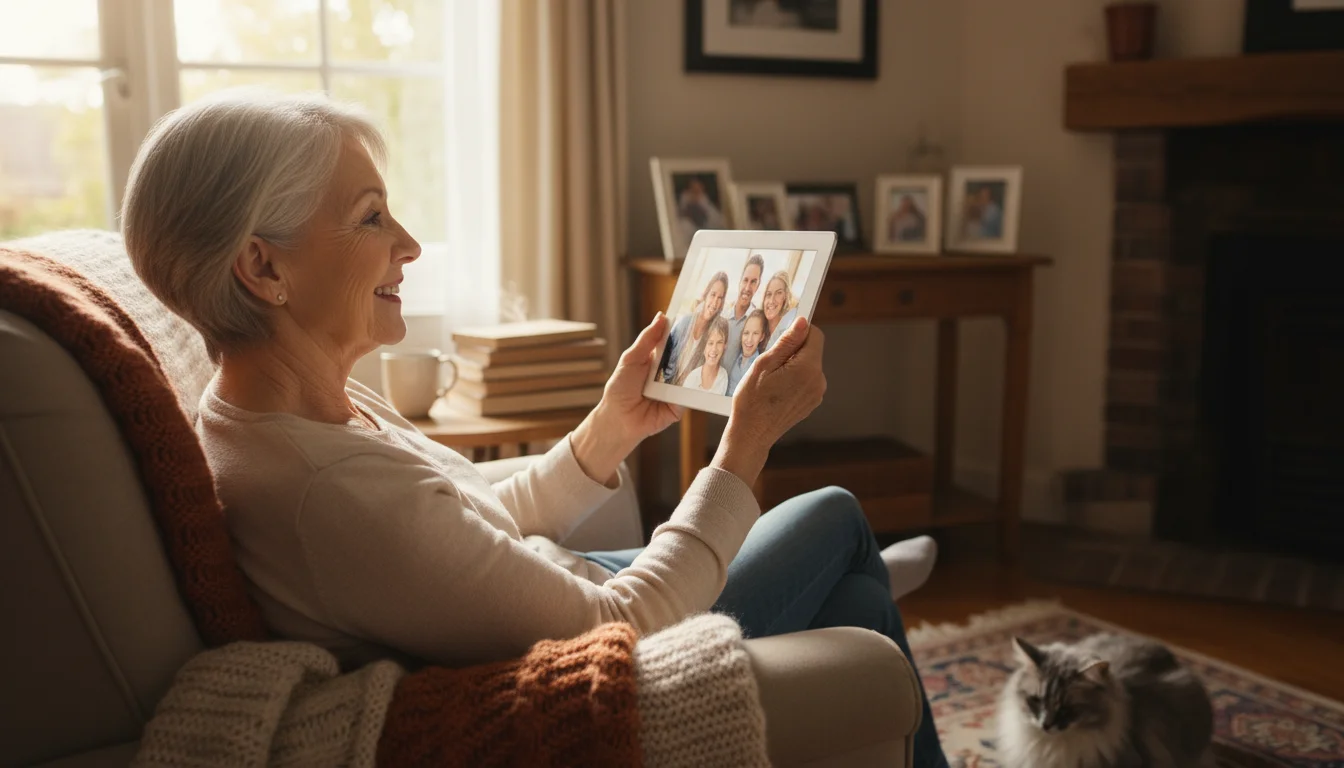
Introduction: Prioritizing Your Health with Connection
As we age, maintaining social connections is as vital to our well-being as a healthy diet and regular exercise. Yet, circumstances such as retirement, mobility challenges, or loved ones moving away can sometimes lead to feelings of isolation. Loneliness isn’t just an emotional state; it can have a significant impact on our physical and mental health. Fortunately, we live in an age where technology offers powerful ways to bridge distances and foster community, right from the comfort of our own homes. Embracing these tools can be a key part of maintaining independence and enhancing your quality of life.
This guide is designed to introduce you to the world of digital tools in a safe, simple, and practical way. We will explore how computers, tablets, and smartphones can become windows to the world, helping you connect with family, rediscover old hobbies, and even make new friends. Think of this not as a complicated technical manual, but as a friendly introduction to using senior tech to support your well-being. The goal is not to replace in-person visits but to supplement them, ensuring you have a rich and supportive social life every day. By learning about these resources, you are taking a proactive step in fighting isolation and nurturing your overall health.

Understanding the Health Benefits (and Any Risks)
Engaging with the digital world offers a wealth of benefits that directly contribute to a healthier, more fulfilling life. These virtual connections can be a lifeline, providing emotional support and mental stimulation that are crucial for healthy aging. However, it’s also important to be aware of the potential risks and to approach new technology with a mindful and cautious perspective.

The Positive Impact on Your Well-being
Staying socially active, even virtually, can have profound effects on your health. Here are some of the key benefits:
- Boosts Mental Health: Regular social interaction is a powerful antidote to feelings of loneliness and can lower the risk of depression and anxiety. A simple video call with a grandchild or a message from an old friend can brighten your day and reinforce your sense of belonging. Authoritative health information for seniors is provided by the National Institute on Aging (NIA), which highlights the strong link between social engagement and cognitive health.
- Enhances Cognitive Function: Learning a new skill, like how to use a tablet or join an online book club, stimulates your brain. This mental exercise helps keep your mind sharp, improves memory, and may even help delay the onset of cognitive decline. Engaging in online games, puzzles, or virtual classes provides excellent mental workouts.
- Strengthens Family Bonds: Digital tools make it easier than ever to be a part of your family’s daily life, no matter the distance. You can see a grandchild’s art project, celebrate a birthday over video, or simply share a quiet moment. These shared experiences strengthen intergenerational bonds and provide mutual emotional support.
- Increases Sense of Purpose: Technology can connect you with volunteer opportunities, online communities centered on your interests, or classes where you can share your wisdom. Feeling connected to a community and having a purpose are fundamental to a positive outlook on life.
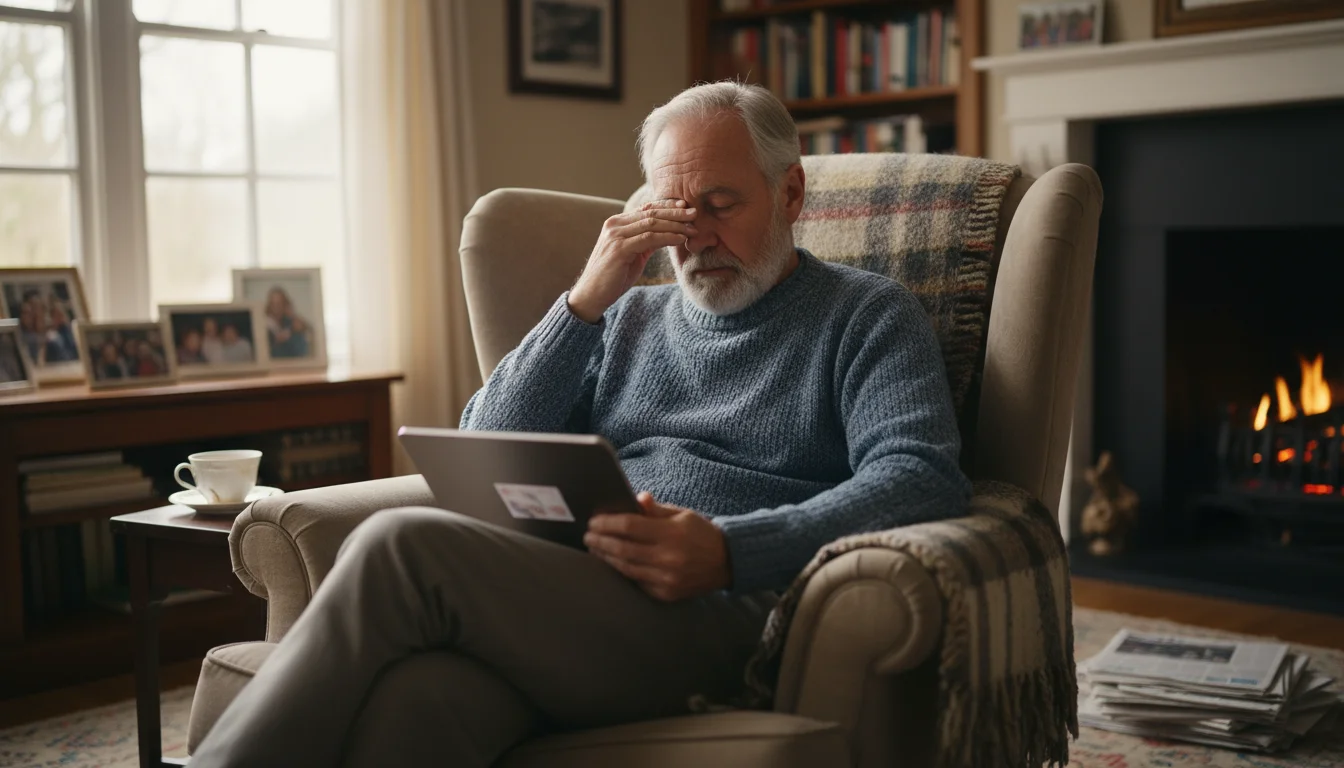
Potential Risks and How to Manage Them
While the benefits are significant, it is wise to be aware of potential downsides. By understanding them, you can navigate the digital world safely and confidently.
- Online Scams and Privacy: The internet is home to scammers who may target older adults. It is essential to be cautious about unsolicited emails, suspicious links, and requests for personal or financial information. We will cover safety tips in more detail later in this guide.
- Eye Strain and Physical Discomfort: Spending too much time looking at a screen can cause eye strain, headaches, and neck stiffness. It’s important to take regular breaks. A good rule of thumb is the 20-20-20 rule: every 20 minutes, look at something 20 feet away for at least 20 seconds.
- Information Overload: The sheer amount of information online can feel overwhelming. It’s helpful to stick to a few trusted websites and apps rather than trying to do everything at once. The Centers for Disease Control and Prevention (CDC) provides reliable guidance on a range of health topics for older adults.
- Feeling Dependent on Technology: Digital tools should enhance, not replace, real-world interactions. It’s important to maintain a healthy balance and continue to seek out in-person social opportunities whenever possible and safe.

A Step-by-Step Guide to Getting Connected Safely
Getting started with technology doesn’t have to be intimidating. The key is to take it one step at a time, start with the basics, and prioritize your safety and comfort. This guide will walk you through the essential steps to begin making meaningful virtual connections.
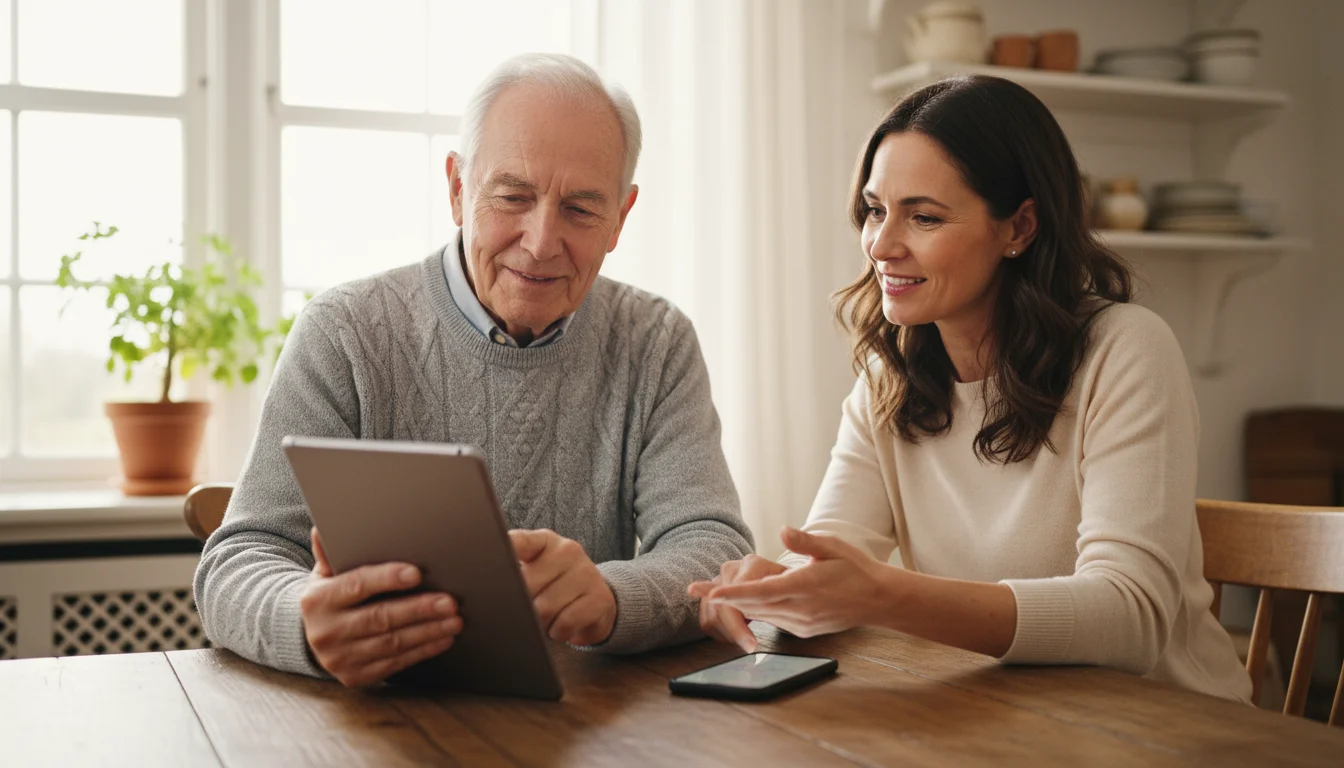
Step 1: Choosing Your Device
The first step is finding a device that feels comfortable for you. You don’t need the most expensive or complicated gadget.
- Tablets (like an iPad or Android tablet): These are often the best choice for seniors. They have large, bright screens that are easy to see and use. The touch-screen interface is intuitive—you simply tap on what you want. They are lightweight and portable, perfect for video chatting from your favorite armchair.
- Smartphones: A great all-in-one option if you also want a phone for calls and texts on the go. Modern smartphones have accessibility features to enlarge text and icons, making them easier to use.
- Computers (Laptops or Desktops): A good option if you are comfortable with a keyboard and mouse. The large screen is excellent for reading, and a physical keyboard can be easier for typing longer emails or messages.
Safety Tip: Ask a trusted family member or friend to help you choose a device that fits your needs and budget. They can also assist with the initial setup.
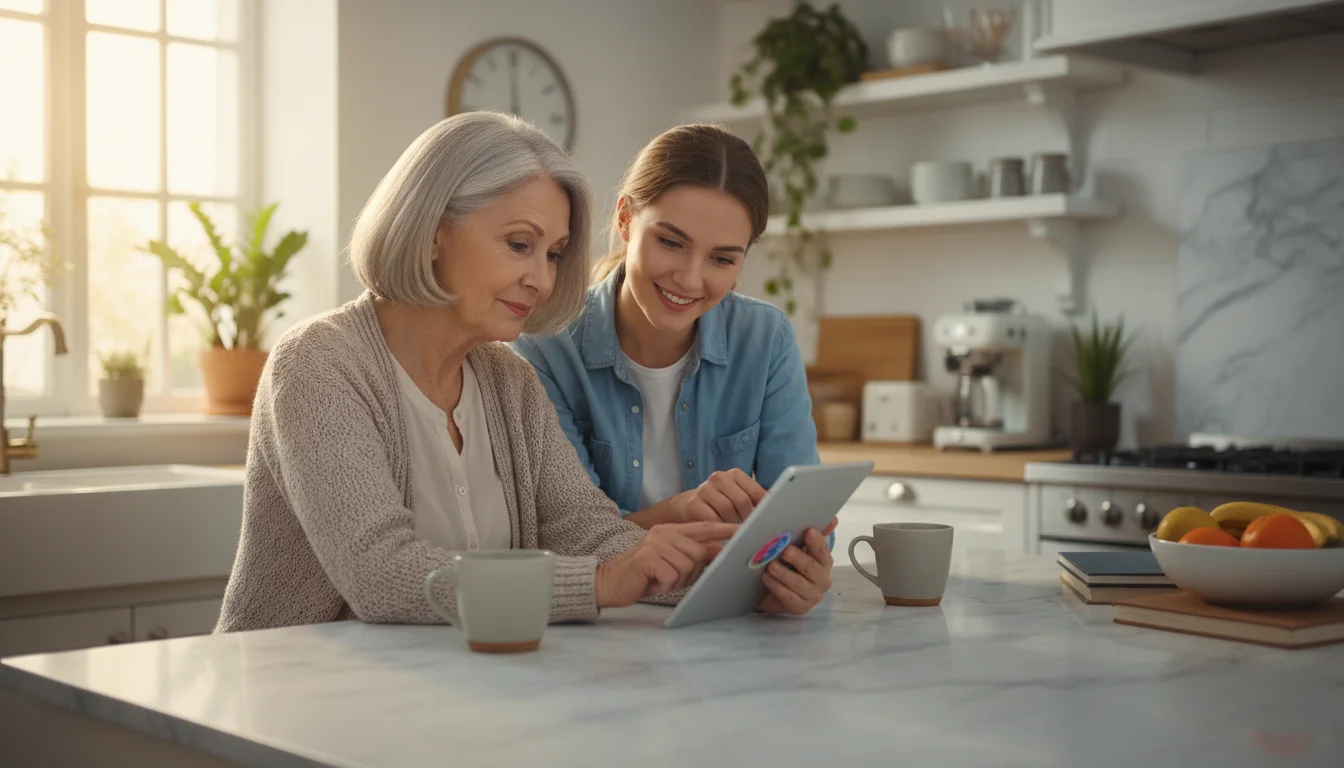
Step 2: Mastering the Basics of Video Calling
Seeing the faces of your loved ones is one of the greatest joys of digital connection. Video calling apps make this possible.
Popular and Simple Apps:
- FaceTime: If you and your family member both have Apple devices (like an iPhone or iPad), FaceTime is built-in and incredibly easy to use. You just tap their name in your contacts list.
- WhatsApp: This app works on almost any smartphone or tablet and is popular worldwide. It offers secure video calls, voice calls, and text messaging.
- Zoom or Skype: These are great for group video calls with multiple family members or for joining online classes. A family member can send you a simple link to click to join a call.
How to Start: Ask a grandchild or trusted friend to do a practice call with you. They can walk you through the steps of answering a call, turning your camera on and off, and ending the call. A few practice runs will build your confidence quickly.
Safety Tip: Only accept video calls from people you know. If a stranger contacts you, do not answer. Block the number and inform a family member.

Step 3: Exploring Social Media with Caution
Social media can be a wonderful way to see photos of family, connect with old friends, and join groups based on your hobbies, like gardening, knitting, or history.
Focus on Privacy:
- Facebook: The key to using Facebook safely is managing your privacy settings. Ask a family member to help you set your profile to “Friends Only.” This means only people you have approved can see what you post.
- Private Groups: Joining private groups on Facebook is often safer and more rewarding than posting publicly. A group for fans of a particular author or a local gardening club can provide a strong sense of community without exposing your information to the public.
Safety Tip: Never share sensitive personal information online, such as your full address, phone number, Social Security number, or financial details. Be wary of friend requests from people you do not know in real life.

Step 4: Engaging Your Mind with Online Activities
The internet is a vast library and community center. Use it to keep your mind active and engaged.
- Online Classes: Websites like Coursera and platforms like GetSetUp (designed specifically for older adults) offer classes on everything from art history to using technology.
- Virtual Tours: Many world-famous museums, like the Louvre in Paris or the Smithsonian in Washington, D.C., offer free virtual tours on their websites.
- Audiobooks and Podcasts: Services like Audible or free apps like Libby (which connects to your local library card) allow you to listen to books. Podcasts are like radio shows on any topic imaginable and are a great source of entertainment and learning.

Key Signs It’s Time to Consult a Doctor
While digital tools are excellent for fighting isolation, they are a support system, not a substitute for professional medical care. Persistent feelings of loneliness can sometimes be a symptom of an underlying health issue, such as depression or anxiety. It is crucial to recognize when it is time to seek help from a healthcare professional.
Please contact your doctor or a mental health professional if you experience any of the following for two weeks or more:
- Persistent Sadness or Emptiness: A low mood that doesn’t lift, even when you connect with others.
- Loss of Interest: No longer finding pleasure in hobbies or activities you once enjoyed, including talking with friends and family.
- Significant Changes in Sleep or Appetite: Sleeping much more or less than usual, or eating significantly more or less than is typical for you.
- Feelings of Worthlessness or Guilt: Harboring strong negative feelings about yourself that are difficult to shake.
- Unexplained Aches and Pains: Physical symptoms like headaches, stomach problems, or chronic pain that do not have a clear physical cause.
- Difficulty Concentrating: Finding it hard to focus on tasks, make decisions, or remember things.
- Overwhelming Fatigue: Feeling tired all the time, no matter how much you rest.
These symptoms are not a normal part of aging and should be taken seriously. Your doctor can help determine the cause and recommend effective treatments, which may include therapy, medication, or support groups. For mental health support, consult the National Institute of Mental Health (NIMH) for credible information and resources.

Making It a Part of Your Daily Routine
The best way to feel comfortable with new technology is to use it consistently. Integrating these tools into your daily life can make connection a natural and effortless habit.
- Schedule “Virtual Dates”: Just as you would schedule a lunch with a friend, schedule a weekly video call with a family member. Put it on your calendar. This creates a pleasant routine to look forward to.
- Start Your Day with Connection: Spend 10 minutes in the morning checking a favorite social media group or sending a “good morning” text to a loved one. It’s a small, positive way to start your day.
- Link It to an Existing Habit: If you always have a cup of tea after lunch, use that time to browse a news website, listen to a podcast, or watch a short educational video on YouTube.
- Set a Small, Achievable Goal: Don’t try to learn everything at once. This week, your goal might be to have one successful video call. Next week, you might aim to find and join one online group that interests you.
- Keep a Cheat Sheet: Write down simple, step-by-step instructions for the tasks you do most often (e.g., “How to open WhatsApp and call Jane”). Keep this notebook next to your device for easy reference.
Remember, patience is key. There will be a learning curve, and it’s okay to make mistakes or ask for help. Every time you use your device, you are building skills and confidence, making it easier to stay connected with the people and passions that matter most.

Frequently Asked Questions
1. I’m worried about the cost. Is this technology expensive?
There are options for nearly every budget. While some devices are expensive, there are many affordable tablets and smartphones available. Additionally, many essential apps for video calling and messaging (like WhatsApp and Skype) are free to use with a Wi-Fi connection. Your local library may also have computers you can use for free and may even offer classes on how to use them.
2. What if I’m just not good with technology? Where can I get help?
This is a very common concern. The best place to start is with a trusted, patient family member or friend. Additionally, many local senior centers and public libraries offer free introductory classes on using computers, tablets, and smartphones. Organizations like AARP and OATS (Older Adults Technology Services) also provide excellent online resources and tutorials specifically designed for senior tech learners.
3. How can I be absolutely sure I’m safe from online scams?
While no one can be 100% safe, you can greatly reduce your risk by following simple rules. The most important rule is this: If something seems too good to be true, it probably is. Never give out your password, Social Security number, or bank account information in an email or message. Be suspicious of anyone asking you for money, even if they claim to be a relative in trouble (always verify by calling them directly). Do not click on links in emails from unknown senders. Trust your instincts—if a message or call feels wrong, it’s okay to ignore it.
4. Can Medicare help me pay for a tablet or internet service?
Generally, Original Medicare (Part A and Part B) does not cover the cost of devices like tablets or smartphones, nor does it cover internet service. However, some Medicare Advantage (Part C) plans may offer special supplemental benefits that could include things like an allowance for health-related items or services, which might be applicable in some cases. It is best to check directly with your plan provider to see what is covered. For insurance and medical coverage questions, the official source is Medicare.gov.
Disclaimer: This article is for informational purposes only and does not constitute medical advice. The content is not intended to be a substitute for professional medical advice, diagnosis, or treatment. Always seek the advice of your physician or other qualified health provider with any questions you may have regarding a medical condition.
|
Fact-Checked Content
Our editorial team reviews all content for accuracy and updates it regularly. Learn about our editorial process →
|







